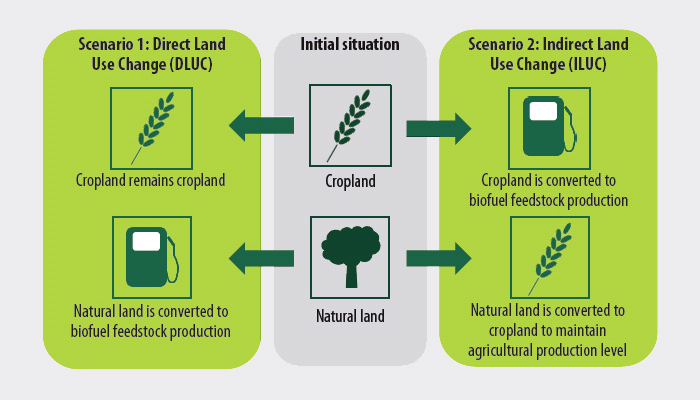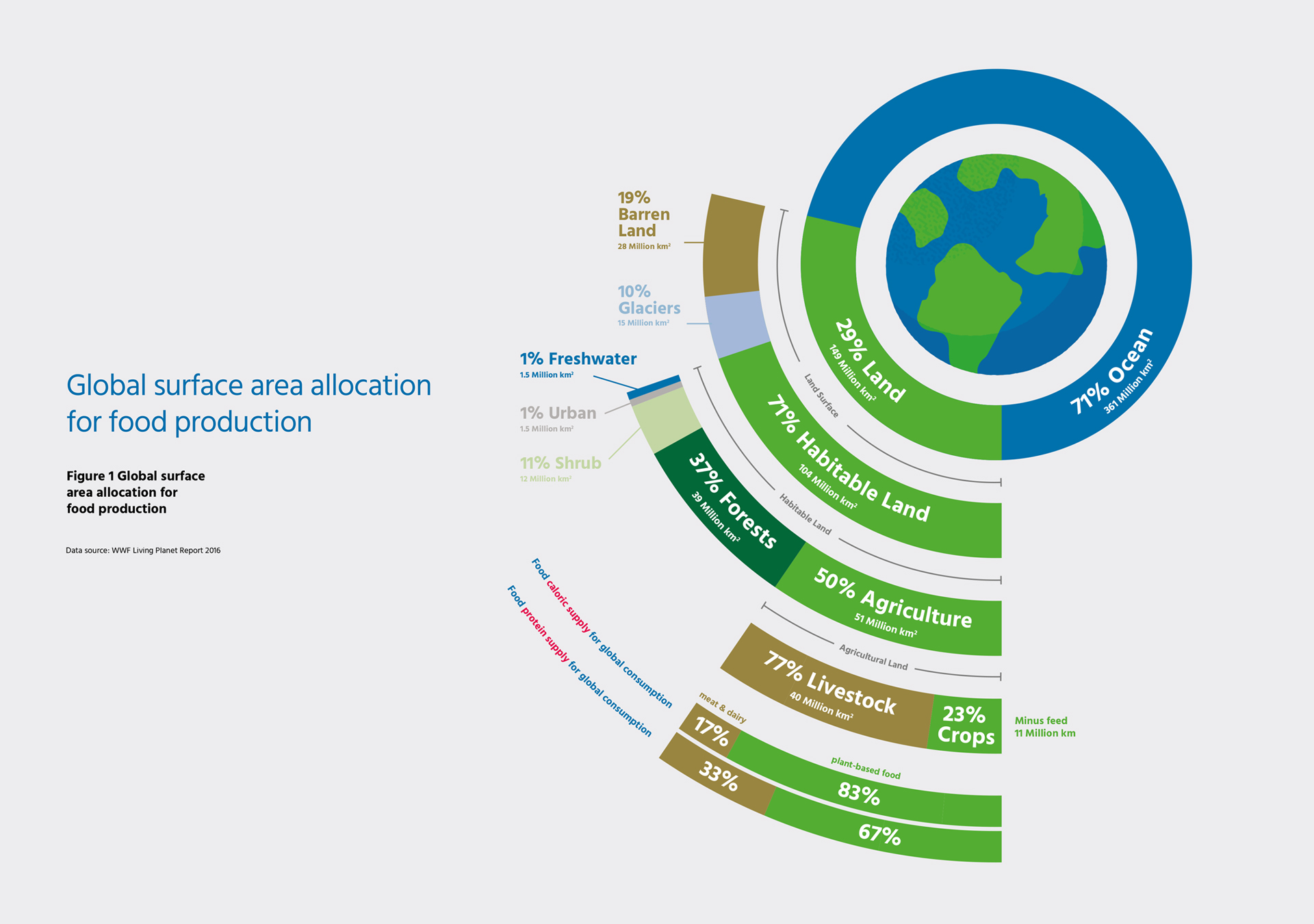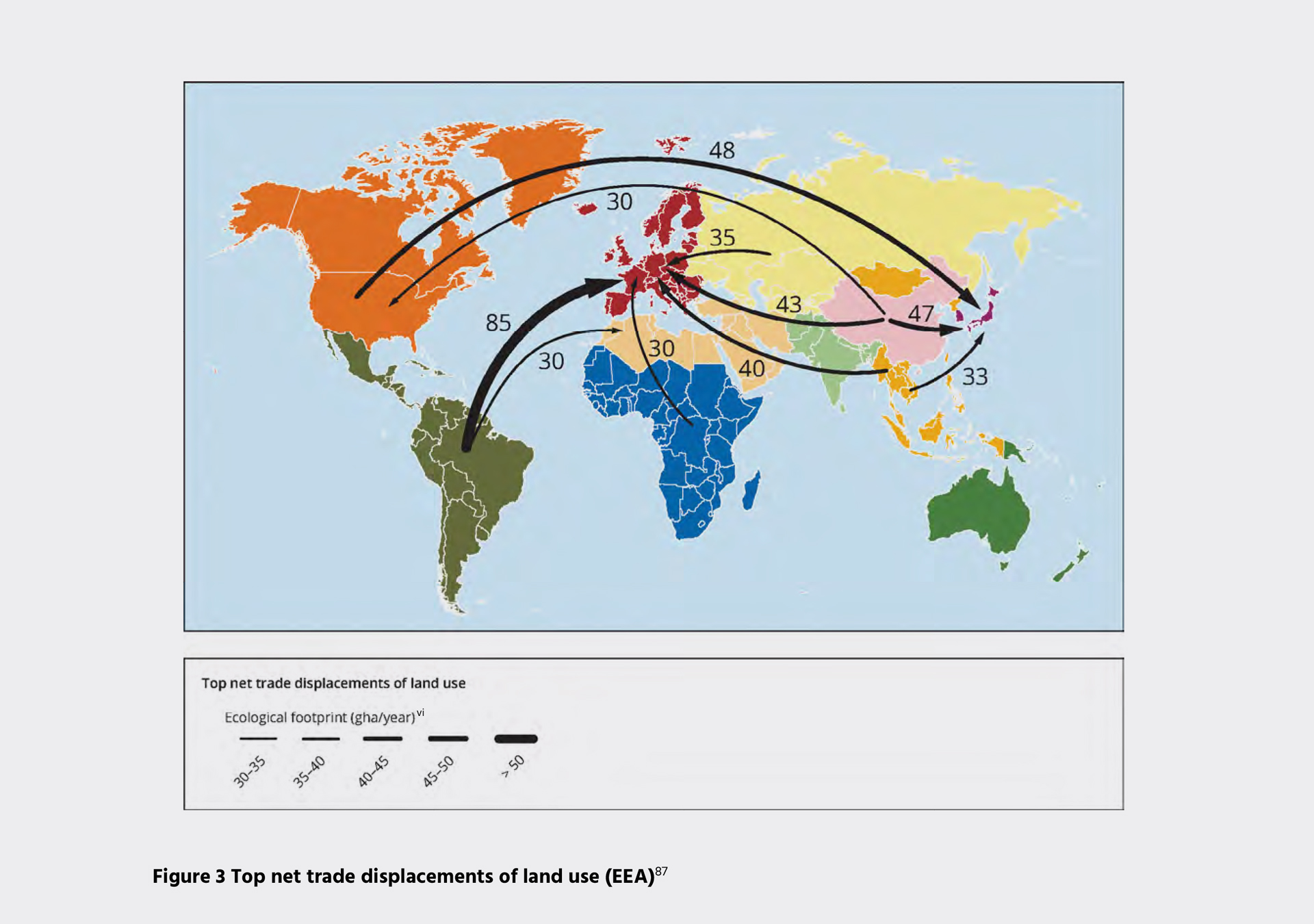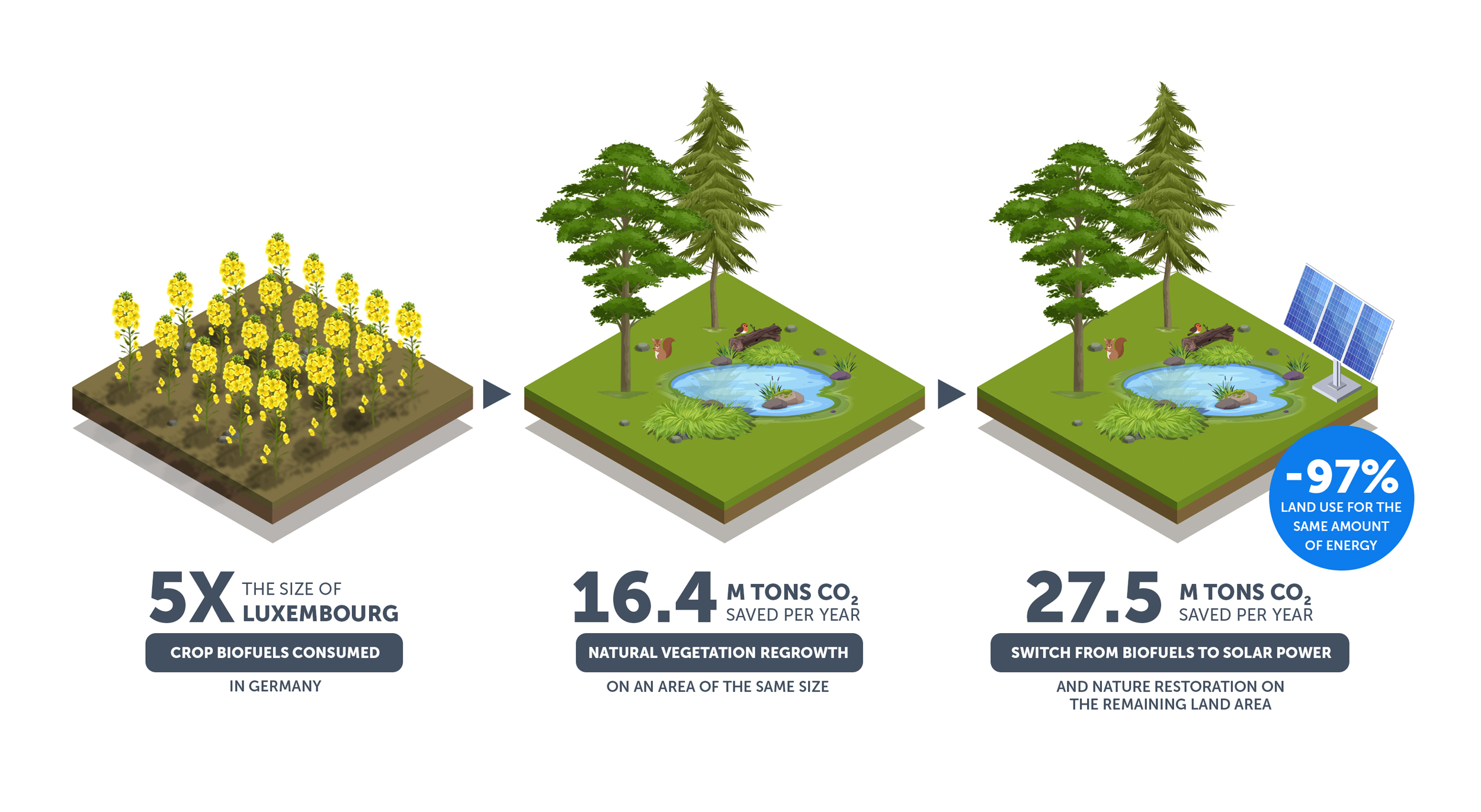BIOENERGY INCREASES THE PRESSURE ON LAND
EARTH HAS LIMITED RESSOURCES
AND WE SHOULD BE CAREFUL IN THE WAY WE USE THEM
Land is a finite resource. 58.4% of terrestrial Earth is estimated to be under ‘moderate or intense human pressure’, and that pressure on land is increasing. And half of the habitable land in the world today is used for agriculture.1
The EU is already a net-importer of agricultural land in the form of animal feed: that means Europe imports huge amounts of feed crops that are grown on the land of other countries (see figures in the slider on the right). Additional demand for biofuel crops will increase this imbalance: by diverting land away from food production Europe’s biofuels demand exacerbates food crises and adds to rises in food prices.

WHAT IS DIRECT AND INDIRECT LAND USE CHANGE?
To produce crops, humans convert natural lands (forests, meadows, wetlands) into arable lands. Today, the main part of arable lands is used for food and feed production. If we produce bioenergy with crops by keeping the existing surface of arable lands, we will lose capacity for food production. This situation leads to Direct and Indirect Land Use Change.
Direct Land Use Change (DLUC) means that we decide to keep all the existing arable land for food production, but that we convert natural lands into arable land for biofuel feedstock production.
Indirect Land Use Change (ILUC) means that we convert a part of arable land used for crops into biofuel feedstock. Therefore, to maintain the same food production capacity, we convert natural land into new croplands.
Both land use changes have dire impacts on nature protection, biodiversity and climate change. Discover more in our pages dedicated to wildlife and climate change.
Image source: ECA3
Large scale production of crops for biofuels and biogas competes with food production and with other land uses such as setting land aside for nature. Using more agricultural land in Europe for bioenergy means that we lose food production capacity and have to import more food from countries where agriculture is encroaching on some of the world’s most valuable natural habitats (e.g. the rainforest).
This indirect land use change (ILUC) lead to additional CO2 emissions from forest clearing and wetland, peatland and grassland transformation into crop land, which are linked to bioenergy demand.2, 3
Palm oil accounts for 33% of all of the world’s production of vegetable oils and is one of the main crops for producing biodiesel (almost 2/3 of palm oil consumed in the EU is burned as a fuel4). But palm oil thrives only in tropical climate where most fertile soils are under recently cleared rain forest.
This mass clearing of forest areas to create palm oil plantations results in significant biodiversity loss, wiping out the last habitats of animals like the orang-utan and destroying precious carbon sinks. It also leads to a huge release of CO2 that was previously stored in the forests when the forests are burned for removal (or for energy production).
Biofuels emit CO2 just like fossils fuels do. To produce crops biofuels for consumption in Germany, it is estimated that more than 1.2 million hectares of land are used – almost five times the size of Luxembourg. A part of it is directly produced on German territory, another part is imported from around the globe5.
On an area of this size, we could instead regrow natural vegetation to sequester 16.4 million tonnes of CO2 per year on average5. By allocating only 3% of this area for solar energy (in addition with natural vegetation), we could save no less than 27.5 million tonnes of Co2 per year! Indeed, solar power via open-field photovoltaics is more than 34 times more efficient than producing crop biofuel, which means that to produce the same energy for electric vehicles, we would use 97% less land than biofuels production!5
Natural habitats not only help us to tackle climate crisis, they also offer other ecosystem services, e.g. enhance pollinator population, protect the surrounding dwellings from floods, allow wildlife to thrive or enrich soil nutrients level. Using valuable land for crop biofuels is not only a poor choice from a climate perspective; it is also harmful for ecosystems and biodiversity by promoting intensive agricultural practices.
- Report “Burn or Restore Meeting competing demands for land in the best way for nature, the climate, and human needs”, BirdLife Europe & Central Asia, 2021
- Biodiesel’s impact: emissions of an extra 12m cars on our roads, latest figures show, Transport & Environment, 2016.
- EU action on energy and climate change, European Court of Auditor, 2017
- Almost two-thirds of palm oil consumed in the EU is burned as energy – new data, Transport & Environment, 2019
- Case study Germany: More than 1 million hectares wasted. The huge climate costs of crop biofuels, Deutsche Umwelthilfe, 2022

WE NEED TO LOWER PRESSURE ON LANDS AND USE SUSTAINABLE PRACTICES

LEARN MORE ABOUT THE OTHER ISSUES WITH BIOENERGY









